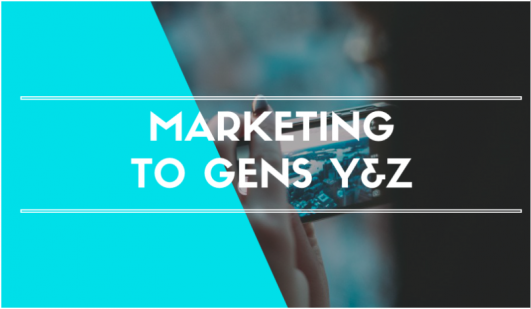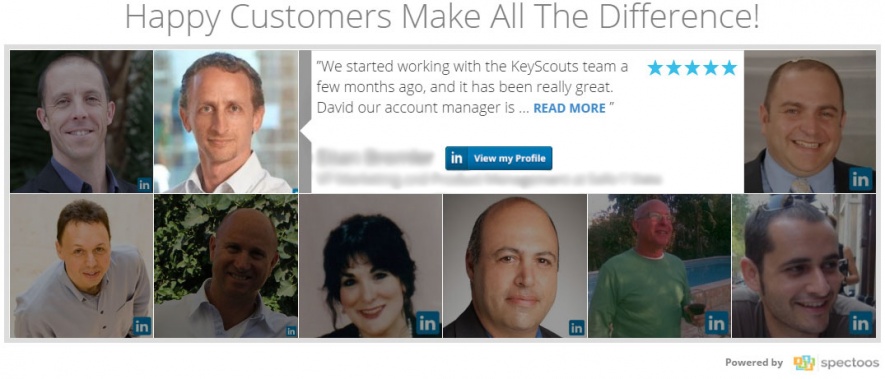Tomer Harel Marketing to the Generational Cohorts: How to Connect with Gens Y & Z 94 Wow-Score The Wow-Score shows how engaging a blog post is. It is calculated based on the correlation between users’ active reading time, their scrolling speed and the article’s length. Learn more Marketing to the Generational Cohorts: How to Connect with Gens Y & Z
- 82
- 13
- 3
- 10
It is time we take a long hard look at how to market to Millennials and post-millennials. Because if we stop shaking our fists and yelling “get off my lawn!” at them long enough, we might be able to sell them our products and services.
If we listen hard enough, we will be able to figure out what they want, give them what they want, and get some things we want, from them as well. Things like time, attention, money, and loyalty.
Selling to Millennials, and to their generational neighbors, the post-millennials (who, so far, have buying behaviors similar to Millennials), is very lucrative. By 2018, they will have more spending power than any other generation.
And they actually don’t mind being sold to—as long as it is done the right way.

Millennials Want Social Proof
Bad news for the guys dropping millions on a Super Bowl ad spot: Millennials don’t love ads.
They like communicating with each other more than they like feeling like they are simply being “talked at” by big, faceless companies.
Instead of spending money on ads, consider spending (probably much less!) money on gaining the interest of influencers, creating content that informs, and curating and displaying customer testimonials.
Why? Let’s answer that question with some numbers from TapInfluence’s latest influencer marketing report:
-
74% of people turn to social media for more info during the buying process.
-
40% of people buy a product after seeing it endorsed by an influencer on Instagram, Twitter, or YouTube.
-
“Influencer marketing content delivers 11X higher ROI than traditional forms of digital marketing.”
So, Here Is What You Do
1. Use Customer Testimonials on Your Site
Somewhere in your buying process, you need to incorporate a feedback system for collecting testimonials. Collect this feedback and use it to display customer testimonials on your site’s homepage, contact page, solutions pages, pricing pages, and any relevant landing pages.
Testimonials should be detailed (what, specifically, did the customer enjoy about your product/service?) and include a name, picture, and links to social profiles.
Doing this is easier than it sounds. You can use a testimonial platform, like Spectoos, which will give you an entire backend to streamline collecting testimonials from customers, an easy way to monitor and manage your testimonials, and a beautifully designed widget that can be easily embedded on your website and online assets.
 Spectoos
Spectoos
2. Leverage the Power of Influencers and Brand Ambassadors
An influencer could be a thought leader in your industry, a celebrity, or a person who has a significant following on social media. Their opinions, recommendations, and suggestions are highly respected and valued by members of their communities and followers. Thus, companies can do influencer marketing to leverage the effect that influencers have on their followers’ purchasing decisions to promote themselves and attract more customers.
3. Create Content That Matters
Fact: Millennials aren’t interested in marketing copy. They want to read content that resonates with them – content that answers their questions, helps them solve their problems, or provides real value. Develop your main buyer personas to determine what makes them tick, and then start a blog, YouTube channel, and/or post visual content on Instagram, regularly. Create a content calendar and start building your online social presence in a highly targeted way to attract these relevant buyers.
Millennials Respond to Personalization
Personalization is taking over the world, and not just in marketing, but in the products that Millennials are buying and even in the buying process itself.
Why is Etsy so popular? Why does it seem like everyone—from Nike and their iD personalized shoes to designer brands like Burberry with their monogrammed scarves—is all about customization now?
Because Millennials are growing less comfortable being an average and conforming face in the crowd, less comfortable being told by brands that this generic thing is what they (and everyone else) should wear, listen to, or put in their apartments; and they are more and more comfortable just being themselves.
Individuality is “in”. Being different and having your personal brand, is “in”. And personalization in buying helps Millennials get there.
So, Here Is What You Do
1. Ask Yourself: How Can I Customize My Offerings?
Think about your product. How can you personalize it? What can you leave open to customization by your buyer? How can you fit these little outlets for individuality—even if you have to start out on a small scale—in the budget this year?
2. Prioritize Valuable Content Over Vanilla Marketing Copy
Communicating with customers by addressing pain points and how you can solve them goes much further than simply talking at your customers with generic ad copy.
Review your budget. What is costing you more right now—content creation and time spent connecting on social media or generic marketing efforts? You might need to re-prioritize.
Millennials Value Experiences Over Brand Names
Here is what I notice when scrolling on Instagram: the most exciting, most likable pictures aren’t pictures of new clothes, new cars, new electronics. They are not pictures of "stuff".
They are pictures of the people dancing at a music festival, backpacking in Europe, or going for a picnic. The truth is, 3 out of 4 Millennials would rather spend money on experiences instead of things.
So, it makes sense that they are also not big on big brand names. They are still loyalists, sure, but they are less trusting of big brands who don’t try to connect with them on an experiential level — on a customized, socially-endorsed level.
This also is why millennials’ huge role in the sharing economy makes so much sense. They value access (even if it means sharing) over ownership—of, say, a car—because they don’t feel like they need to own the stuff. They just want to be able to use the stuff when they need it for an experience.
So, Here Is What You Do
1. Market the Experience, Not the Product
It is not as abstract and elusive as it sounds.
What—besides your product—do you really want to sell? What brand associations do you want to sell? Thoughtfulness? Trustworthiness? Authority?
Think about that when you sit down to build experiences into the center of your marketing campaigns. You need to market the experiences your customers can have with your product – not the product, itself.
2. Brainstorm Ways to Build the Marketing of Your Product Into a Physical Experience
How can you insert your company or product into the center of a millennial’s experience? For example, maybe you can afford to build a pop-up store in a relevant location with a lot of millennial foot traffic.
If you teach something like yoga, you could offer free trial classes. If you make protein bars, you could host or sponsor a local 5k.
There are plenty of ways to create a real-life experience for millennials and establish brand awareness. And doing so will create a connection between your company and the positive experience in the minds of the consumers.
Think about your audience and your product, and come up with a few clever ideas that could fit in your budget.
3. How Can You Fit Into the Sharing Economy?
Is there anything about your product or service that is shareable? Rentable? Tradable? Can you use a freemium, tiered, or installment plan business model to entice more signups or purchases?
If yes, give it a try. Run a few A/B tests to see which works best among your different customer segments.
Say Hello to the Marketplace’s New Biggest Player
Millennials are entering their years of prime earning (and spending!) potential. And they are doing it in a way that shakes up the marketplace as we knew it 20 years ago.
They crave the social proof. The personal touch. The real-life experiences. If you can give them all of that, then that is how you will get the sale.



